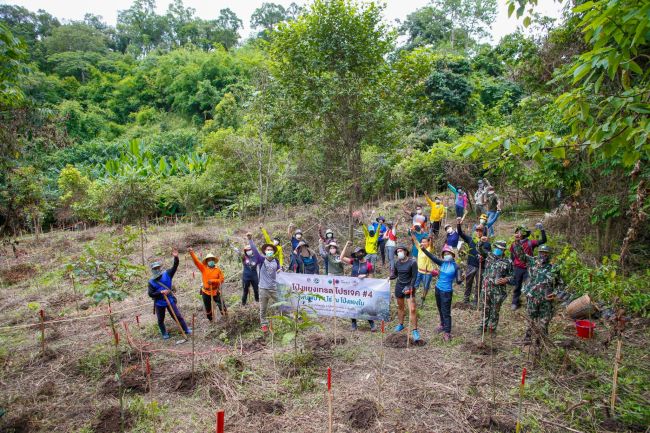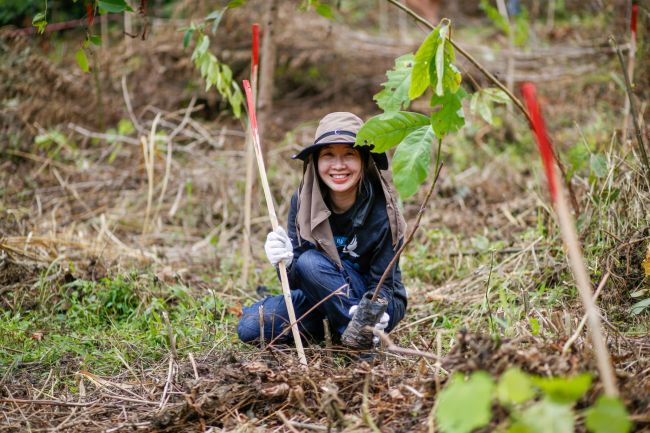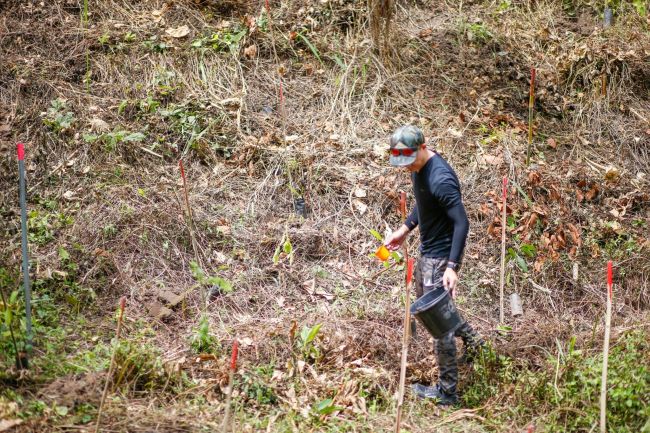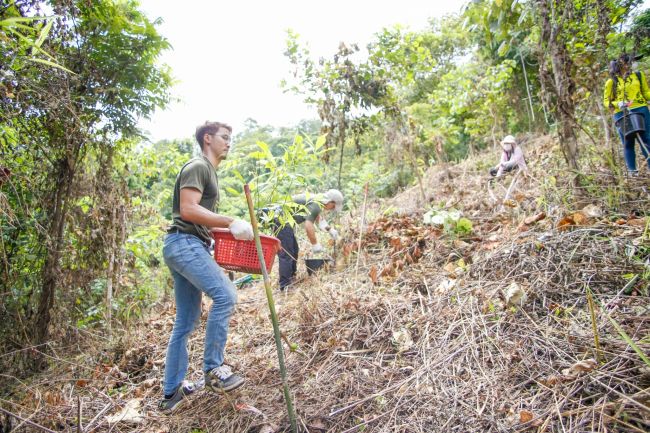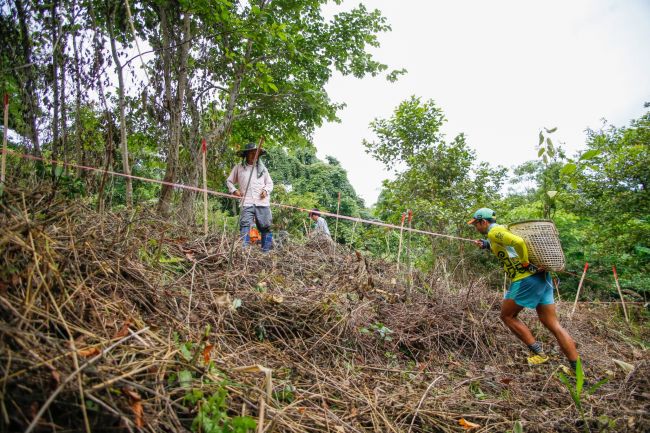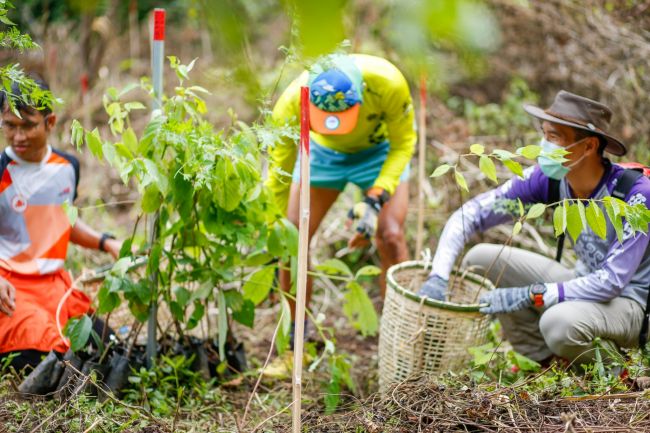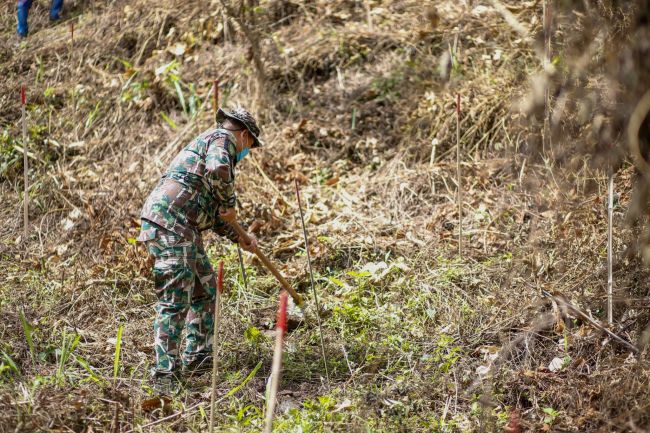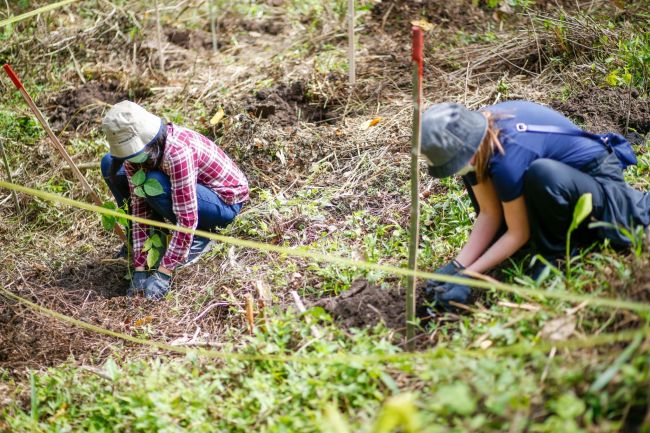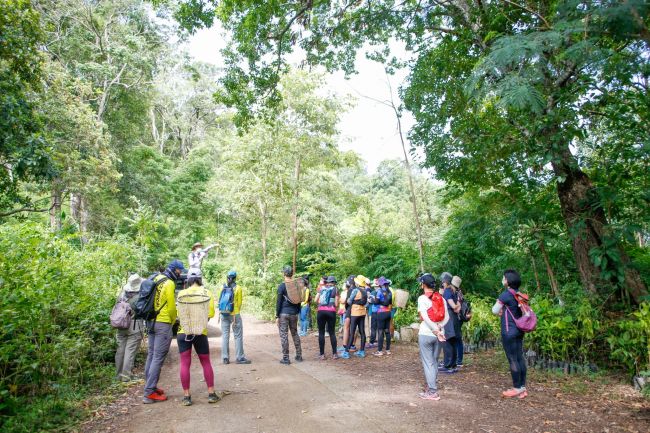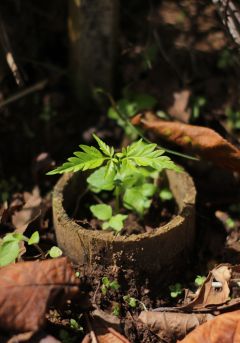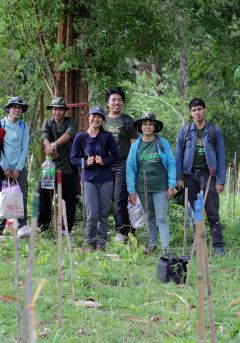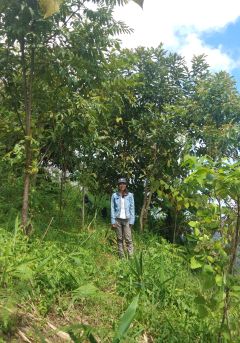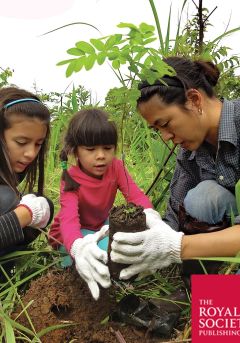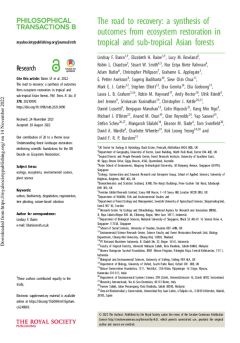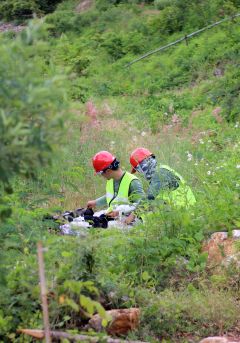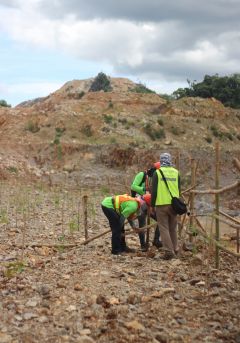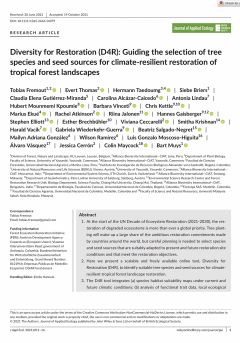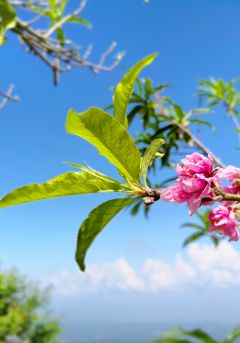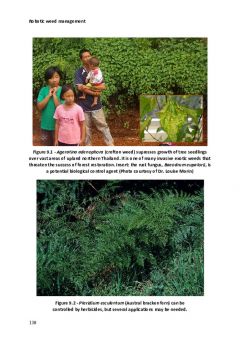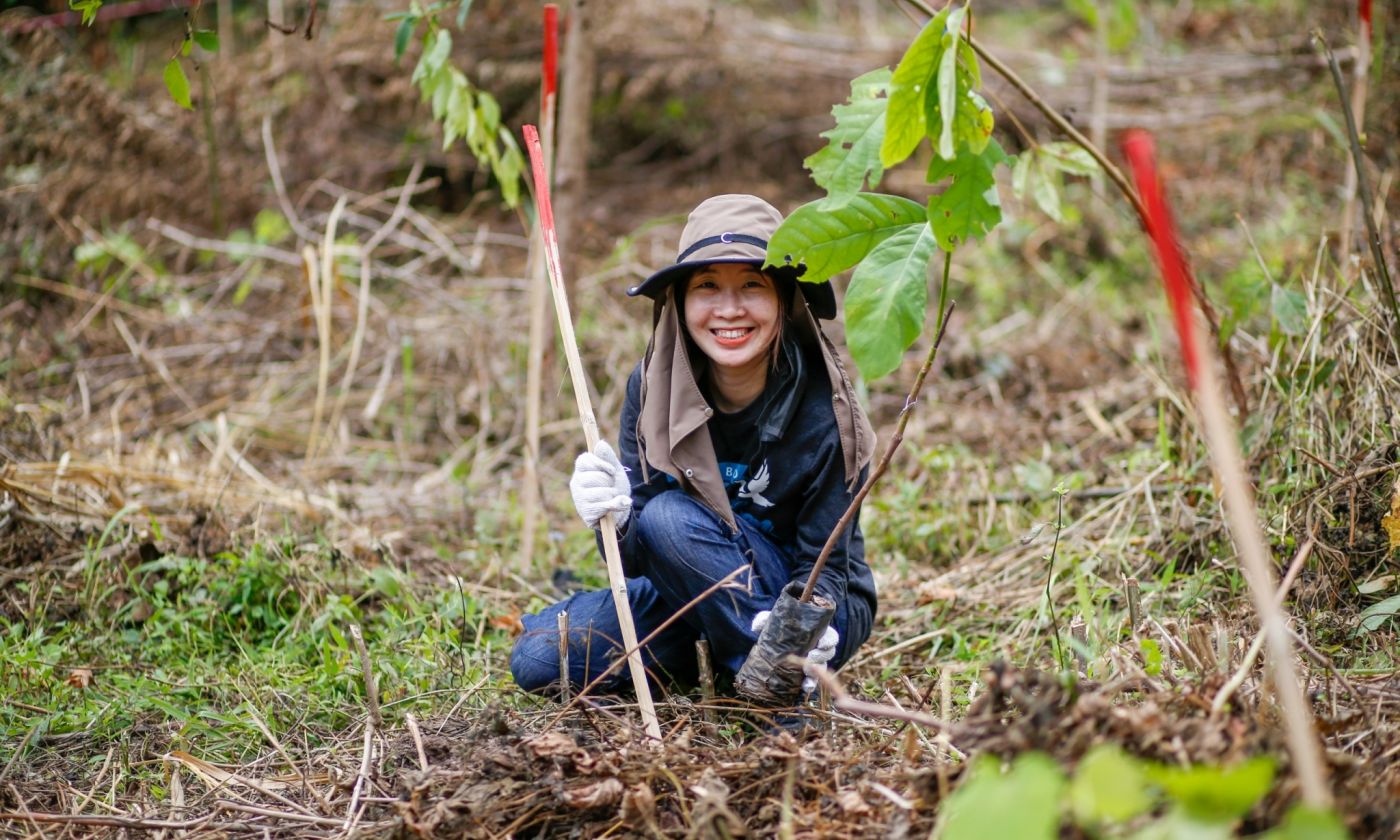
The project is assisting Doi Suthep Nature Center (DSNC), funded by the Pong Yaeng Running Club, to restore forest to four rai (0.64 ha) in Pong Yaeng District, with the participation of a wide range of volunteers and students. The scientific objectives are i) to test suitability of candidate framework tree species for restoring upland evergreen and ii) to determine if application of biochar can boost early tree performance on this highly degraded site.
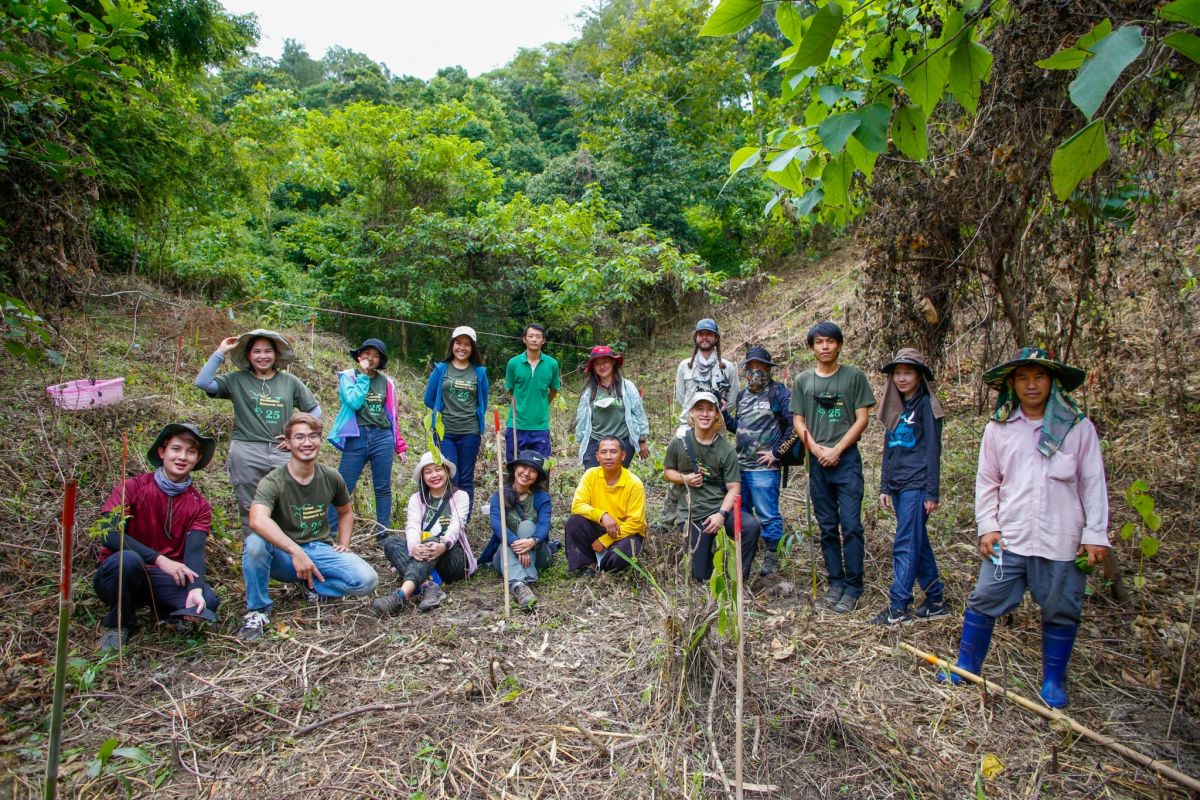
The project plan evolved during the third quarter of 2021 during discussions among FORRU-CMU, DSNC and DNP officers. A rapid site assessment was carried out, to determine the numbers and species of tree saplings required, barriers to restoration and to draft a project plan and budget. Pong Yaeng Running Club generously offered to fund the project and biochar was donated by Warm Heart.
Doi Suthep-Pui National Park Authority aims to reforest burnt, or otherwise degraded, areas within the park and had earmarked this site for restoration since cultivation of the site had ceased 10 years previously and natural forest regeneration was not progressing well.
Pong Yaeng Nai villagers and FORRU-CMU staff prepared the site two days before planting 1,350 trees on August 13th-14th 2021. Baseline monitoring for tree growth and survival was done two weeks thereafter, and maintenance (weeding and fertilizer application) will be performed 3 times per rainy season for 2 years.
Ten pioneer species and 10 climax species were selected for this site. Six species being tested for the effects of biochar: Melia toosendan, Hovenia dulcis, Spondias axillaris, Prunus cerasoides, Alseodaphne andersonii and Alangium kurzii, distributed in 5 subplots with non-treated trees (controls) distributed in the surrounding area. Other species being tested for suitability (without biochar treatment) include Balakata baccata, Acrocarpus fraxinifolius, Mallotus philippensis, Quercus semiserrata, Cryptocarya amygdalina and Cinnamomum iners.
1: Selecting suitable tree species for direct seeding to restore forest ecosystems in northern Thailand
ABSTRACT: To upscale restoration of tropical forest ecosystems, direct seeding—sowing seeds directly into the ground—is potentially more cost-effective than tree planting. However, its success is...
2: Developing Techniques for Direct-seeding for Forest Restoration in Northern Thailand
ABSTRACT: Forest restoration by direct seeding is potentially more cost-effective than tree-planting, especially for upscaling restoration of tropical forest ecosystems. Unfortunately, its success...
3: Differential seed removal, germination and seedling growth as determinants of species suitability for forest restoration by direct seeding – A case study from northern Thailand
ABSTRACT: Direct seeding is potentially a more cost-effective alternative to conventional tree planting for restoring tropical forest ecosystems. However, seed loss, due to removal and damage by...
4: Understanding forest landscape restoration: reinforcing scientific foundations for the UN Decade on Ecosystem Restoration
Under the United Nations Decade on Ecosystem Restoration, 2021-2030, there has been no more critical or opportune time to restore forests, which are critical for the world’s species, people and...
5: The road to recovery: a synthesis of outcomes from ecosystem restoration in tropical and sub-tropical Asian forests
Abstract: Current policy is driving renewed impetus to restore forests to return ecological function, protect species, sequester carbon and secure livelihoods. Here we assess the contribution of...
6: Use of Unmanned Aerial Vehicle (UAV) Imagery to Monitor Progress of Early Forest Ecosystem Restoration in an Opencast Mine
ABSTRACT: Monitoring forest restoration is essential for improving and advancing restoration techniques, but human-based monitoring is costly as it requires intensive labour in the field. Although...
7: Comparison of seedling detection and height measurement using 3D point cloud models from three software tools: applications in forest restoration
ABSTRACT: A challenge for forest restoration is monitoring success, particularly in terms of seedling survivorship. 3D-point-cloud models, generated from aerial images taken from unmanned aerial...
8: Diversity for Restoration (D4R): Guiding the selection of tree species and seed sources for climate-resilient restoration of tropical forest landscapes
ABSTRACT: 1. At the start of the UN Decade of Ecosystem Restoration (2021–2030), the restoration of degraded ecosystems is more than ever a global priority. Tree planting will make up a large...
9: Allelopathic Effects of Prunus cerasoides Buch.-Ham ex. D. Don Leaves on Common Weeds in Forest Restoration Sites
ABSTRACT: Weeding by hand tools is the most expensive part of forest restoration projects, so herbicides are an attractive alternative weeding technique. However, synthetic herbicides may have...
10: Innovation and robotics in forestry weed management
ABSTRACT: Traditional and established methods of weed management are outlined, from hand-weeding, to the use of herbicides and biological control. Recent new developments in detection and control...

